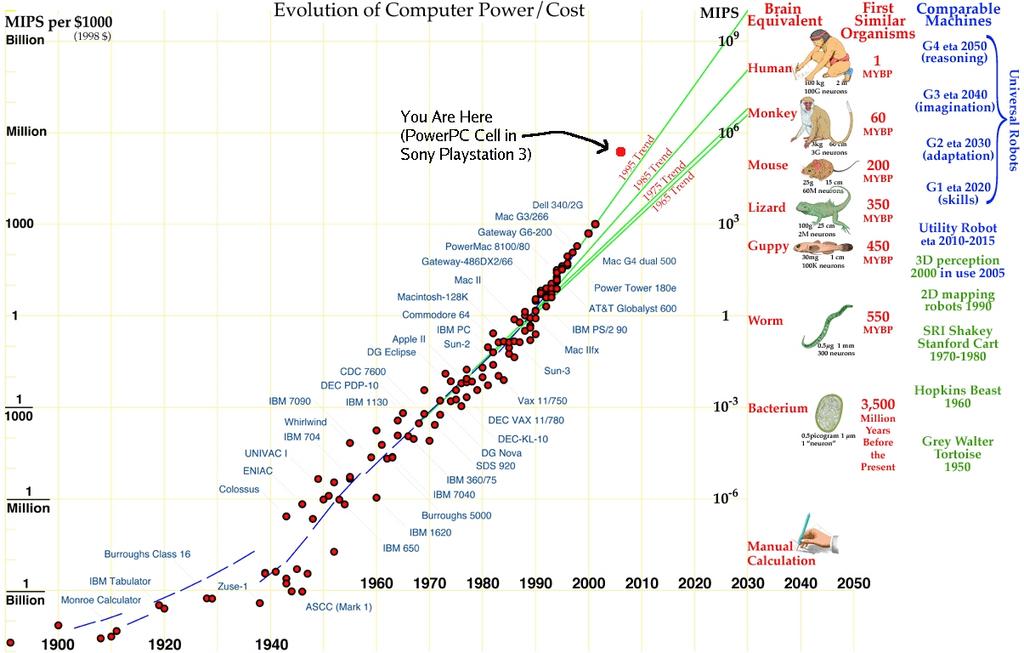For those of us in the robotics and machine vision business, this is big news. Very big news. Because not only is it an order of magnitude faster per cost than anything else for its niche, its niche happens to be very well suited for machine vision and robotics. Just when I was thinking that Moore's law was stalling out, this comes along. For amusement, I've plotted it on one of my favorite Moore's law related charts done by Hans Moravec (a famous roboticist and author of Robot: Mere Machine to Transcendent Mind).

Admittedly, it's not quite accurate since Moravec only plots general purpose computers, and at first blush the CELL is somewhat specialized - it's really optimized to crunch a lot of numbers. On the other hand, intelligence can emerge from a huge amount of raw number crunching. That's true at least in the area of machine vision. This is enough processing power to crunch through 60 frames per second for each of several high resolution cameras and that's good enough to "see" quite well - not quite human level, but almost. Indeed, as the graph shows, robots with a couple of these processors will be able to achieve the intelligence of somewhere between a mouse and a monkey. And we're on course to achieve the computing capability required for human level intelligence by 2030 (though the software may take substantially longer).
No comments:
Post a Comment